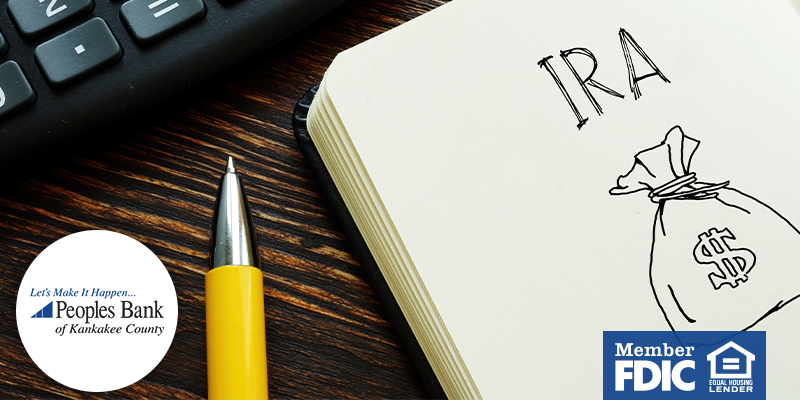Posted On: January 20, 2022 by Peoples Bank of Kankakee County in: Budget Personal Finances Retirement Saving

It may seem like a lifetime away, but retirement has a way of sneaking up on all of us. Something to remember when it comes to retirement is that the earlier you start saving, the better. Plus, you’re never too young to invest in your future. Here are some helpful strategies you can implement to set yourself up for a successful retirement.
1. Rid Yourself of Debt
The first step in creating a retirement fund is to look at what you’re dealing with in terms of debt. Make a plan to pay off each debt as soon as possible. You may do this by putting extra money towards your lowest-balance credit card, or perhaps towards the credit card with the highest interest rate.
2. 401(k) Plans
Investing money in an account specifically set aside for retirement allows you to store up without paying taxes on gains until you reach retirement. If your employer offers a 401(k) plan, that’s a great place to start. Typically, employees contribute a portion of their salary to their 401(k) and the employer may offer a matching contribution up to a specific limit.
3. Open an IRA
On the same note, individuals can also choose to save for retirement on their own and open an Individual Retirement Account, or IRA. This retirement account has lower contribution limits than a 401(k). It doesn’t have to go through your employer, so the amount you invest is under your control. If your company doesn’t provide a 401(k) match, you may choose to max out on your personal IRA and put the remaining money into your 401(k). Working with a financial advisor is extremely beneficial as they will help you know what the right solution is for you.
4. Create an Emergency Fund
You may have a good amount of money stored up in your savings fund, but how much of that can be used in case of an emergency? An emergency fund is a separate savings or bank account used to cover expenses of an unforeseen nature. Keep your nest egg savings and your emergency fund savings separate so that you have a cushion if things go wrong. This will prevent you from needing to withdraw from your retirement account prematurely. A good rule of thumb is to set aside three to six months’ worth of living expenses in an emergency fund.
5. Automate Your Savings
If you have a hard time staying disciplined and remembering to contribute to your savings account each month, there’s a way to help with that. By making your savings automatic, you won’t even
have to think about it since it will transfer for you. Set a savings goal for the year, figure out how much you need to save each month in order to make that happen, and go from there!
6. Keep an Eye on Your Account
If you’re making saving for retirement a priority in your 20s, you’re in a good place already. Check back on your account periodically to watch your savings grow. That will continue to motivate you throughout your 30s, 40s and beyond. The fact is, when you are young, time is on your side so start early and start today.
7. Think About What You’re Saving For
There are plenty of cool things you are saving for when it comes to retirement. You may want to live somewhere tropical or have a vacation home. Maybe an RV is more your style and you and your partner want to travel the country. Determining what your plan for retirement is will help you know how much extra to save for the fun stuff.
Questions about retirement or unsure where to start? Our team is here to help! Contact Peoples Bank of Kankakee County to begin planning your financial future.

